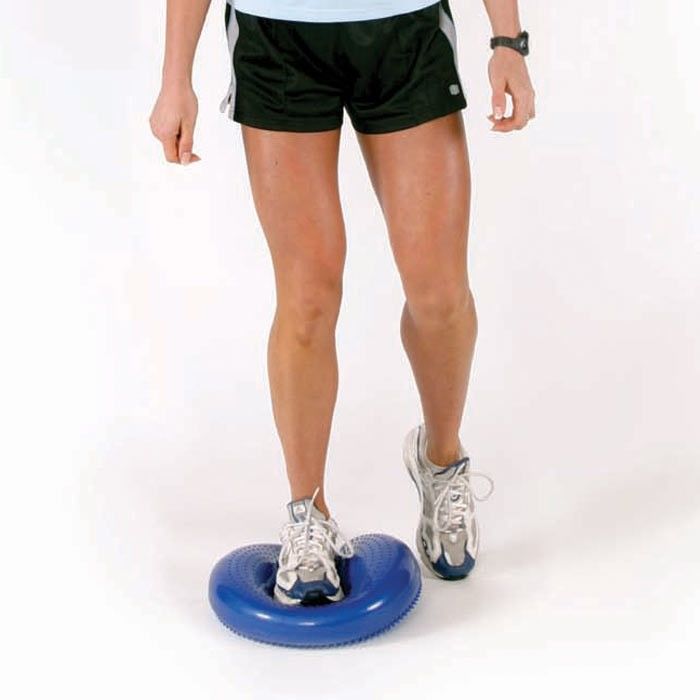Prevention and management of ankle sprains
Ankle sprains are a very common injury in many sports. Here are some facts about ankle sprains:
- Currently, non-surgical management with rehab is the most effective management for ankle sprains
- In a single NBA season, around 100 players experience an ankle sprain
- In the last 11 years, there have been only 4 cases of surgical treatment for ankle sprains in the NBA
- About 85% of ankle injuries involve the ligament complex on the outside of the ankle.
- There are three “grades” of ankle sprain; grade 1 (mild), grade 2 (moderate/partial tear) and grade 3 (severe/complete tear)
- Studies show that you are twice as likely to re-sprain your ankle within the first year of spraining your ankle
There are multiple factors in the prevention and management of ankle sprains.
Proprioception is one of the most important training principles in ankle training. Whether you are rehabilitating an injury or simply looking for exercises to strengthen your ankles and prevent sprains (ideally, the latter!). Proprioception is the concept of your body knowing and controlling where it is in space. When you consider a sporting environment, individuals are often moving at quite a fast pace. Players are required to have very good proprioception in their joints in order to make rapid directional changes and react to contact from another player without injuring themselves.
Often people think that improving their mobility and range of motion at the ankle is the most important part of rehab/prehab. Yes, it is important to maintain good range of motion in dorsiflexion (bending the knee forwards over your toes) both in general and after an ankle sprain. However, if your ankle does not have adequate stability through range of motion, you’re in trouble.
Here are some ideas for exercises to improve stability, strength and proprioception in your ankles.
The wobble cushion!
Progressing from easiest to hardest:
- Balancing with both feet on the wobble cushion
- Balancing on the wobble cushion with one foot at a time
- Balancing with both feet on the wobble cushion while throwing a ball against a wall in front of you to challenge your balance
- Balancing on the wobble cushion on one leg while throwing a ball against a wall in front of you
- Balancing on the wobble cushion while throwing the ball from one side to the other – this is a really good one to challenge your proprioception and stability
The aim of this balance training is to improve your proprioception and muscular control so that your ankle develops better reflexes and stability for an uncontrolled sporting environment.
NOTE: the wobble cushion is great to use if you are simply looking for a good way to strengthen your ankles, however, it is NOT used in the very early stages of rehabilitating an acute ankle sprain – it is important to progress to these kinds of exercises under the guidance of your physiotherapist after an ankle sprain.
Peroneal muscle strengthening
Strengthening the peroneal muscles on the outside of your shin is an important part of ankle rehab or prehab – these muscles contribute to the control and stability of the ankle. Your physiotherapist will be able to prescribe you with an exercise of the most appropriate difficulty level to help strengthen these muscles.
Dynamic ankle stability
Exercises that involve a more rapid forwards or sideways movement with one leg start to challenge your ankle in a more sport-specific way. You can start with something as simple as a forwards or sideways lunge, then progress to a bound or “hop”. If you’re after something really challenging or you are at the end stages of ankle sprain rehabilitation, you can try forwards or sideways lunging/bounding onto an unstable surface such as a bosu ball.
- Other things such as supportive footwear, bracing and taping can also help during the rehabilitation process, but evidence suggests that proprioception and balance training is the most effective in preventing ankle injuries
- A physiotherapist knows how and when to progress your exercises based on the strength and health of the tissues. It is important to consult a physiotherapist to ensure you have an accurate diagnosis and an appropriate rehab program for the severity of your injury.

